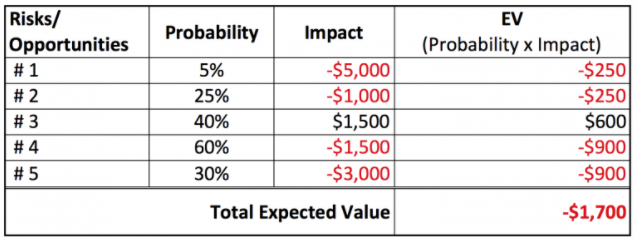

In the previous article on Construction Project Contingency Budgets, we started a discussion of how to use proven risk management techniques, to justify and validate this important tool of project managers. Not only do risk management tools give you, as the project manager, confidence that you have positioned your construction project for success, but these tools also provide great documentation to provide to both your clients, and your company management.
In the previous article, I presented what I called “Level 0 Contingency Budget” planning. In this article, I dive a little deeper into risk management techniques. For projects of higher complexity, or higher costs, the effort required (still minimal at this level) to prepare this risk analysis, may justify itself.
Risk Management: Next Level
Okay, so what if there is a real need to assess risks in more detail, and come up with a high confidence Contingency Budget. Perhaps, this is a critical project for your company, and it is vital to get it right. Or, your client expects a detailed Risk Analysis. In any case, the methods are basically the same as what I presented for Level 0, but with more detail and more effort — but the steps are very similar:
- Identify the Risks: Same as Risk Areas above, but in more detail.
- Assign the Probability of Occurrence: How likely is this risk to materialize?
- Quantify the Impact: What is the cost (in dollars) if the risk happens?
There are lots of great tools available for each of these steps, and good discussions abound. (Here are a couple great references, from PMI and ProjectAcademy.) But, an in-depth discussion is beyond the scope of this blog. In a subsequent posting, I will dive very deep into this topic. But for now, I’ll just show you an example of the output of this exercise.

